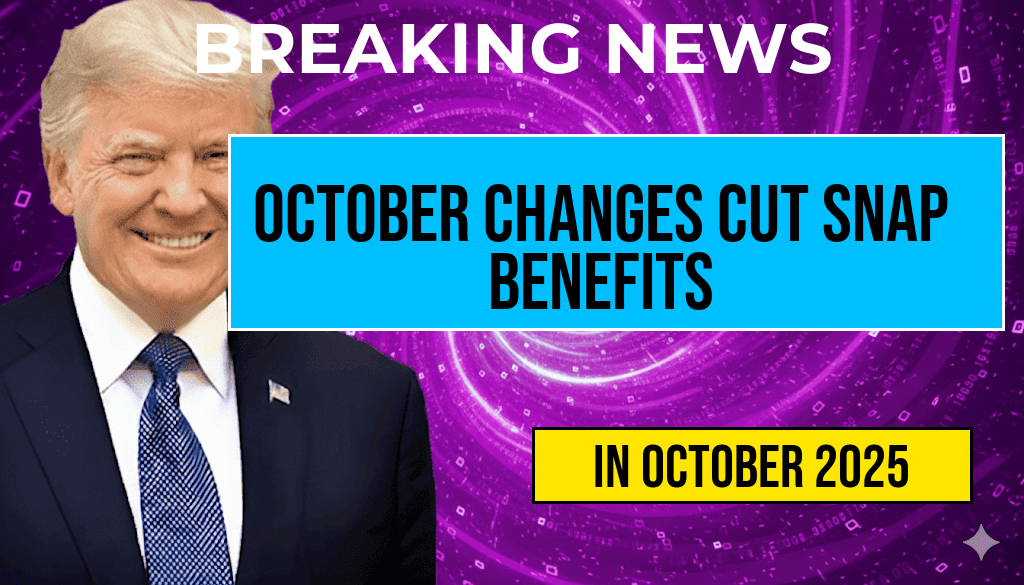In a significant policy shift, the U.S. Department of Agriculture (USDA) is set to implement an overhaul of the Supplemental Nutrition Assistance Program (SNAP) in October, which will eliminate certain benefits for millions of recipients across the country. The changes come as part of a broader initiative aimed at reducing federal spending and restructuring the program to enhance its efficiency. While the USDA maintains that the revisions will promote self-sufficiency among participants, critics argue that the move could leave many vulnerable families without essential nutrition support. The new regulations are expected to impact eligibility criteria, benefit amounts, and work requirements, stirring concerns among advocacy groups and state officials about the potential consequences on public health and food security.
Key Changes to SNAP Benefits
The upcoming changes to SNAP are multifaceted and will affect various aspects of the program. Below are the primary alterations that recipients should anticipate:
- Eligibility Criteria: The income thresholds for qualifying for SNAP benefits will be adjusted, potentially disqualifying many households that previously received aid.
- Benefit Amounts: The overall benefit amounts will be recalibrated, with reductions expected for several categories of recipients, particularly those with higher income levels.
- Work Requirements: Stricter work requirements will be imposed, necessitating that able-bodied adults engage in work or training programs to maintain their benefits.
Impact on Recipients
The impending changes have sparked alarm among various stakeholders, particularly low-income families and individuals who rely on SNAP for their daily nutritional needs. According to a recent report from the Center on Budget and Policy Priorities, approximately 4.5 million people could see their benefits reduced or eliminated entirely due to the overhaul. Advocates fear that these alterations will exacerbate food insecurity, particularly in communities already facing economic challenges.
State and Local Responses
State officials are bracing for the changes, with many expressing concerns about the logistical implications of implementing the new regulations. Several states are already preparing outreach programs to educate recipients about the upcoming changes and assist them in navigating the new eligibility standards. In response to the anticipated fallout, some local governments are considering expanding their own food assistance programs to mitigate the impact on affected families.
“These changes could have dire consequences for the most vulnerable members of our communities,” said a spokesperson for the California Department of Social Services. “We are committed to ensuring that no one goes hungry as these changes unfold.”
Advocacy and Legislative Action
In the wake of the announcement, various advocacy groups, including Feeding America and the Food Research & Action Center, have mobilized efforts to oppose the changes. They argue that cutting benefits undermines the program’s original intent: to provide essential nutrition support to those in need. Lawmakers from both parties have also expressed apprehension about the potential consequences of the overhaul, with some indicating plans to introduce legislation aimed at protecting SNAP benefits.
Public Opinion
Public sentiment regarding the changes appears divided. A recent survey conducted by the Pew Research Center indicated that while some Americans support reforms aimed at reducing government spending, a significant portion of the population believes that nutrition assistance programs should remain robust, particularly during times of economic uncertainty. The survey revealed that nearly 60% of respondents are concerned that cutting SNAP benefits will increase food insecurity.
Conclusion: The Road Ahead
As the October overhaul approaches, the USDA is expected to release detailed guidelines outlining the specific changes to SNAP. Recipients and advocacy organizations will be closely monitoring the situation, preparing for the potential ramifications of these significant alterations. As discussions continue, it remains to be seen how the government will balance fiscal responsibility with the pressing need for food security among its citizens.
For more information on the SNAP program and the upcoming changes, you can visit the USDA Food and Nutrition Service or refer to the Center on Budget and Policy Priorities.
Frequently Asked Questions
What is the October Overhaul regarding SNAP benefits?
The October Overhaul refers to recent changes in legislation aimed at eliminating certain benefits for SNAP recipients, impacting how assistance is distributed to eligible individuals and families.
Who will be affected by the changes to SNAP benefits?
The changes will primarily affect current SNAP recipients who rely on these benefits for food assistance, particularly those who may have received additional support that is being eliminated.
What are the reasons behind the elimination of benefits for SNAP recipients?
The main reasons for the elimination of these benefits include budget constraints and a push to reform the SNAP program to ensure that assistance is directed towards those most in need.
When will the changes to SNAP benefits take effect?
The changes from the October Overhaul are set to take effect at the beginning of the month of October, impacting all SNAP recipients from that date onward.
What can SNAP recipients do to prepare for the changes?
SNAP recipients are advised to review their eligibility, stay informed about the changes, and consider seeking additional resources or assistance programs to help mitigate the impact of the benefit eliminations.

Leave a Reply